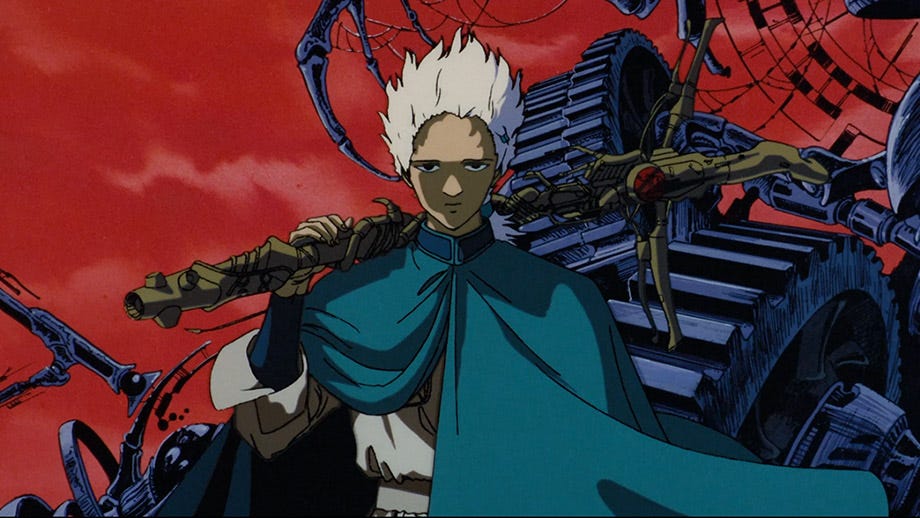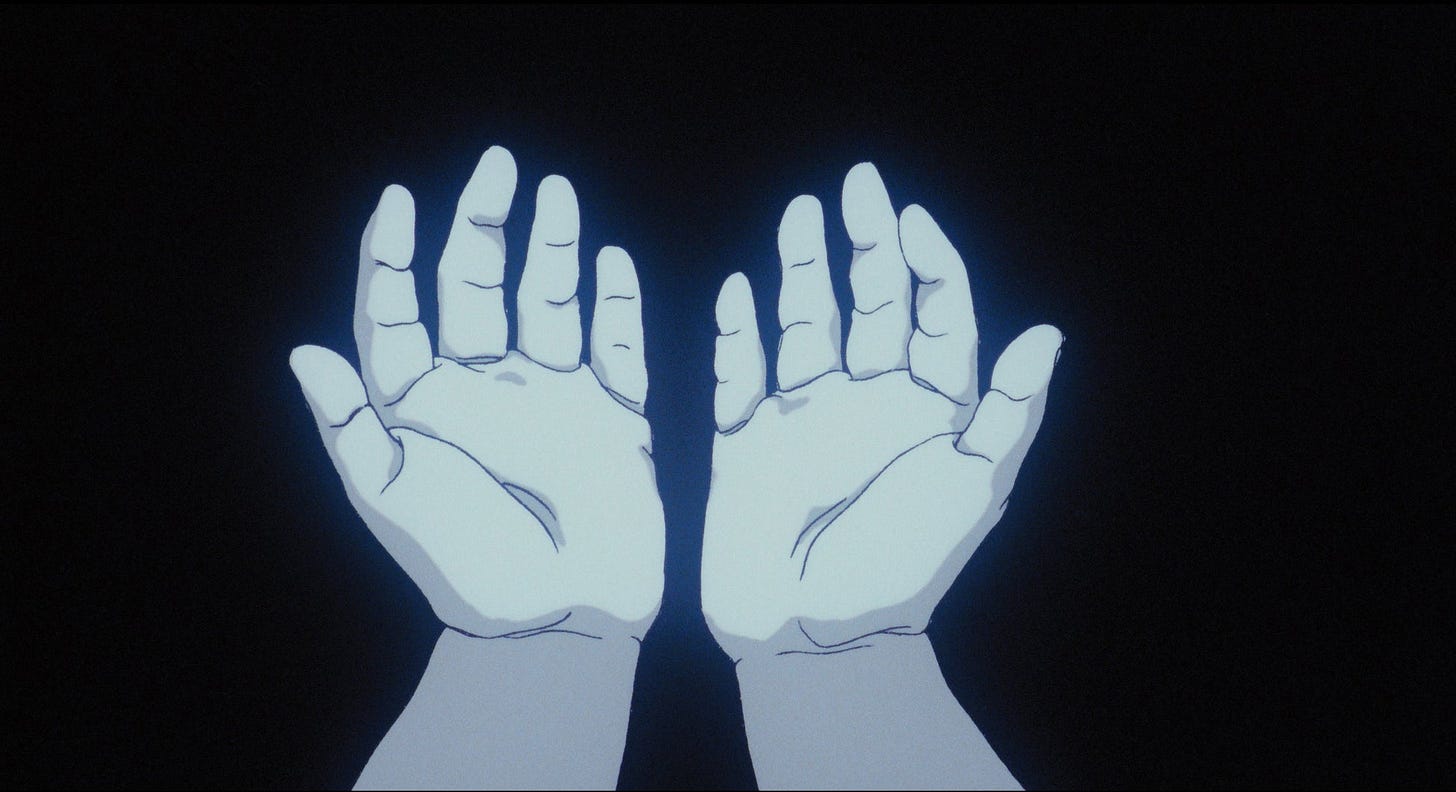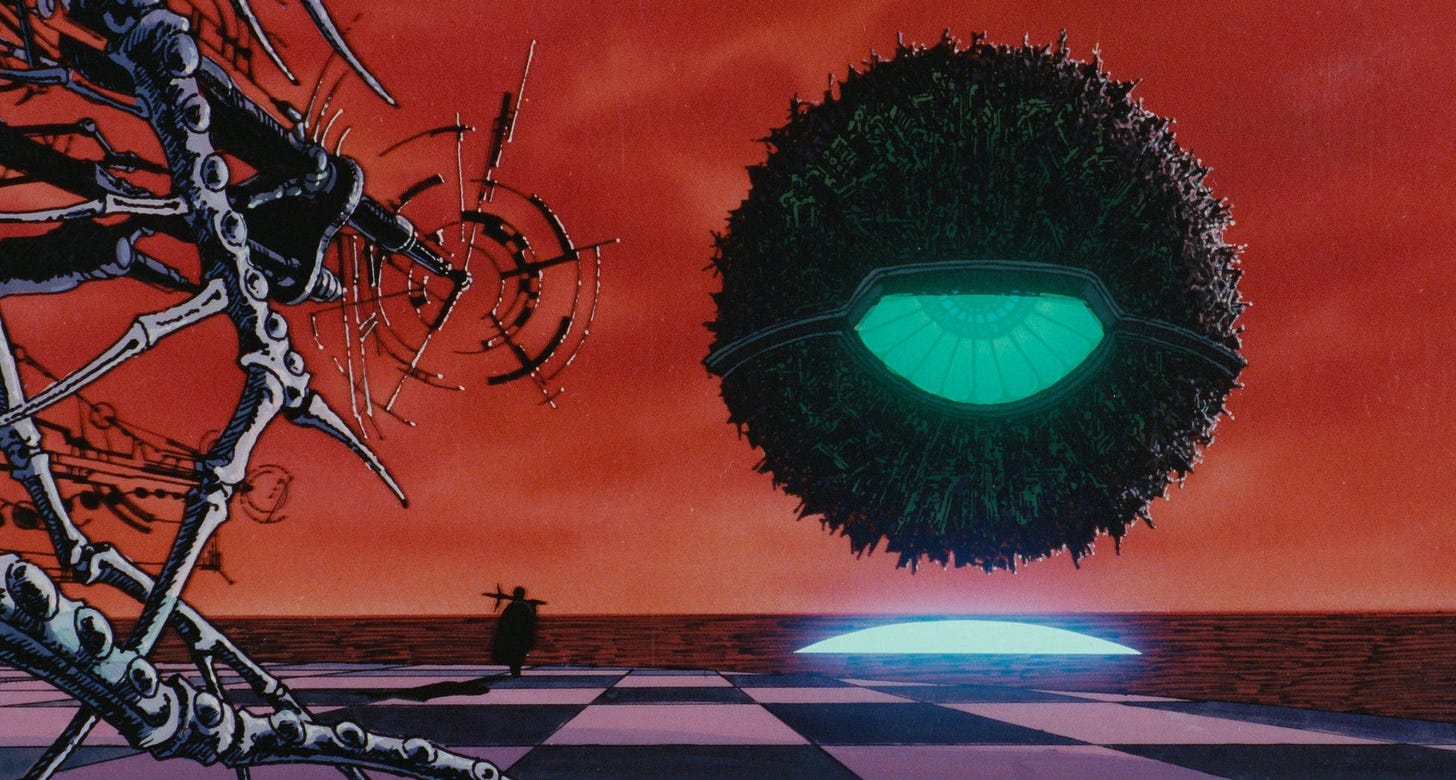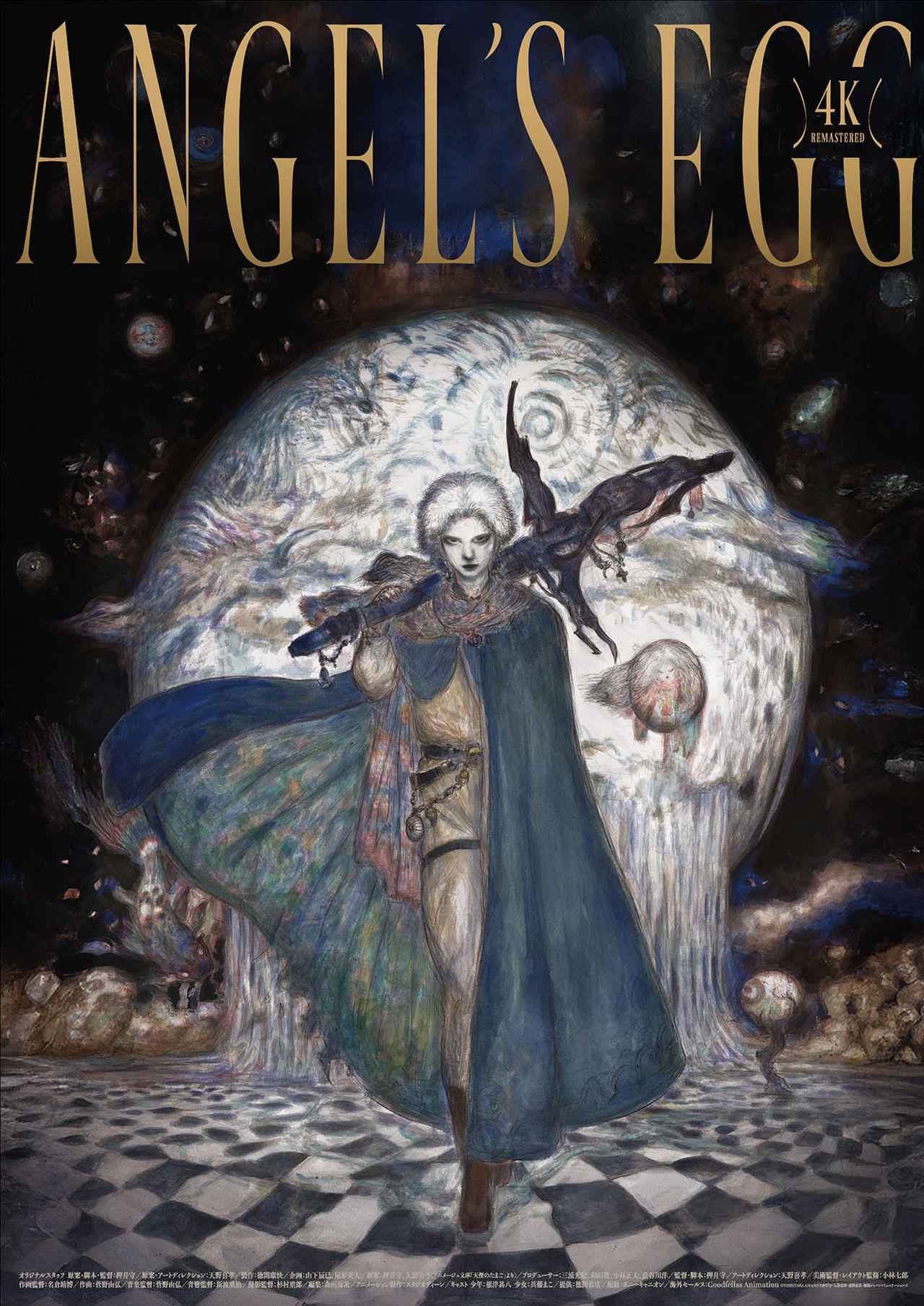Angel’s Egg Returns in 4K and Oshii Revisits the Anime’s Mysteries
Japanese pop culture news edited by Patrick Macias
Director Mamoru Oshii appeared at a Dolby Cinema event in Tokyo to discuss the new 4K remaster of Angel’s Egg.
The director reflected on the film’s challenging production, from handpicked staff to working for a year with no income.
Oshii also explained his hands-on role in the restoration process and what revisiting the anime means to him after forty years.
The 4K remaster of the 1985 anime OVA Angel’s Egg, originally conceived, written, and directed by Mamoru Oshii with original concept and art direction by Yoshitaka Amano, began its Dolby Cinema screenings November 14. To commemorate the release, Oshii appeared on stage at Marunouchi Piccadilly in Tokyo and spoke about the film’s creation, the restoration work, and what the project means to him forty years later.Why Oshii Oversaw the 4K Restoration
Why Oshii Oversaw the 4K Restoration
Oshii served as overall supervisor for the 4K remaster. He said, “This is a film that should be checked by specialists, but they have passed away, so I was the only one who could do it. That is why I handled the checks.” Asked whether he felt a special responsibility, he said, “Angel’s Egg is like a daughter who was never able to make her debut properly in the world. After forty years it feels like she has come back to me, and now I am being told she will be given a beautiful touch up and sent back out into the world. So I feel a bit of responsibility as a parent.”
He also recalled the uncertain state of the OVA (Original Video Animation) market at the time. Oshii said, “No one understood what an OVA was supposed to be or what price was appropriate,” and described persuading Tokuma Shoten by telling them, “I do not know how much royalty money will come in, but I will take responsibility, so why do you not try it.” He said this discussion took about two hours, and added, “From there I spent about a year with no income while we continued production.”
The Creative Drive Behind Angel’s Egg
Asked why he pushed ahead under such uncertain conditions, Oshii said, “Because I wanted to try.” Reflecting on his mindset at the time, he said, “That was when I was beginning to feel confident in animation in my own way. I wanted to make a film that did not depend on story or character, but could stand through expressive power alone.” He added, “I was in a charged up state, so I thought even if I made a strange film, maybe people would watch it. If I was going to do it, I felt that moment was the only chance.”
Characters as Symbols, Not Drama
Oshii said, “Angel’s Egg uses the most typical setup, boy meets girl, so there were surely people who wanted to see their relationship dramatized.” He explained, “I had no intention of doing that, so the two characters remain close to symbols rather than fully formed characters. Their inner worlds are barely shown. That is something I reflect on.” He concluded, “Even so, the film taught me that a director should do what they want fully, even inside a commercial framework. In that sense, it became a decisive work for me.”
Recruiting a Team for an Unusual Film
Oshii described how he personally persuaded each staff member to join. “I could not do anything alone, so I told them that unless they did it, the project had no chance.” He added, “I believed that if I could not persuade them, the project would be over. But in the end there were many people who wanted to try making a film like this.” He then revealed that the entire OVA was photographed using a single camera, saying, “The head of the shooting studio, Juro Sugimura, told me, ‘I will shoot all of this myself.’”
A Staff Driven by Craftsmanship
Asked about the atmosphere of production, he said, “I was a little surprised, but the staff were craftsmen, and craftsmen always have the desire to push their work to the limit.” He added, “Because there were people seeking that sense of achievement, Angel’s Egg was possible.” He also said, “Technical experimentation should be continued in every project. As a result, the skills of the staff and the studio remain, and those skills can be applied to many other works. That is the ideal.”
Discussing the restoration, Oshii said, “The sound was originally mixed in mono, so we had to separate it and mix everything again.” He explained, “Recreating the old elements while bringing them into a new dimension is very difficult. Starting from zero would be easier.”
How the Film Reflects Its Era
Reflecting on the film’s themes, Oshii said, “Even if a film leans toward art, it is always influenced by its era. You cannot make something unrelated to the times.” He continued, “I aimed to be a director within the atmosphere of that era, with a feeling of wanting to break everything. Maybe I still feel that way.” On the final scene, he said, “The sense of loss in the girl’s final scream is something that era produced. We lived with a feeling that something important had been lost, even if we could not name it.”
An Anime That Refuses to Be Fully Explained
Oshii said, “Someone who watched the film forty years ago will not see the same film today. Especially this one.” He continued, “You do not know where to begin talking about it, and when you do, it always feels slightly off target. That is how I made it. It seems to have a core, yet it does not.” He added, “It is full of vague metaphors that overwhelm people,” and concluded, “In truth, it is simple and cannot be put into words. It slips away as soon as you think you grasp it. That is what film should be. I aimed for that, maybe too strongly, because the audience slipped away too much.”










